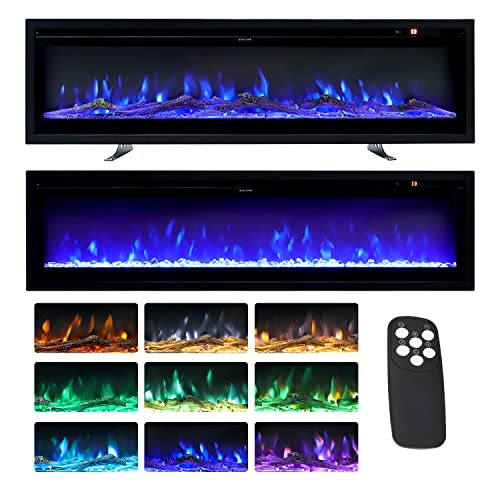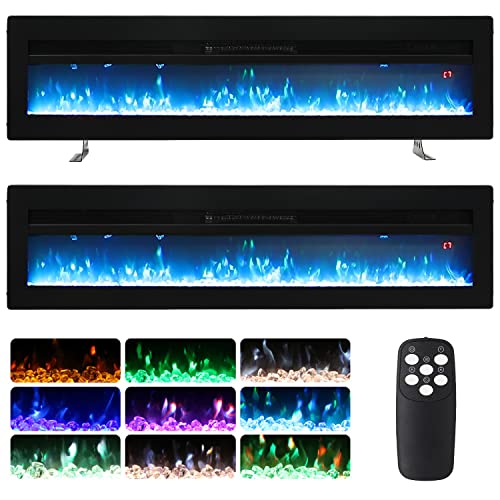Five Things Everybody Gets Wrong Concerning Wood Burning Fires
페이지 정보

본문
 Wood Burning Fires Need to Be Hot and Clean
Wood Burning Fires Need to Be Hot and CleanThe warmth and ambience of a wood-burning fireplace is not only soothing and mesmerizing but also essential to our health and well-being. They must be hot and clean to function.
 Green, or unseasoned, wood has a high moisture content which makes it difficult to light and burn efficiently. Kiln dried or seasoned wood has a lower moisture content, making it easier to light and maintain a flame.
Green, or unseasoned, wood has a high moisture content which makes it difficult to light and burn efficiently. Kiln dried or seasoned wood has a lower moisture content, making it easier to light and maintain a flame.Efficient Combustion
The fire in the wood must be sufficiently hot to burn off water and reach temperatures that exceed 540 deg F. The process of producing heat from secondary combustion begins at 900 degrees F (in ideal conditions). This is the most crucial step to efficient combustion of the fuel while minimizing pollution smoke, creosote, and accumulation in the flue.
It is important to keep in mind that the temperature required for secondary combustion is dependent on the type of fuel and the conditions in the environment. The best method to reduce the variations is to use dry firewood that is seasoned and has less than 20 percent.
In addition, the quantity of air supplied to a fire can significantly impact its heat output and time to burn. The greater the oxygen supply, the hotter a fire will burn and the shorter its burn duration. When the air supply is insufficient, a wood fire produces less heat and burn at a slower rate.
To maximize burn time and efficiency, a wood stove or fireplace insert should be fitted with an adjustable air damper. A wide open setting allows the fire to consume all the oxygen available and quickly exhaust the fuel that is usable. A fire that is contained in the confines of a small wood burning stove area is less likely to spread.
A firewood pile that has been dried properly is essential for efficient wood burning. When wood is freshly cut and hasn't had the chance to dry, it will have high water content, which can be difficult for logs to burn. For the best performance, it is recommended that you use only wood that has been seasoned that has been stored outside for six to nine months.
The BTU content of wood is another factor to take into consideration. White pine and spruce could be cheaper than eastern hardwoods, such as shagbark, hickory and black locust, but their BTU numbers are higher. This means they'll produce more heat for the same amount of wood. It is important to take into account your heating needs and the cost of fuel when selecting your firewood.
Clean Burning
freestanding wood burning stove smoke can trigger indoor air pollution, which can cause irritation to the lungs and respiratory distress in seniors and children. These pollutants comprise volatile organic compounds (VOCs) such as formaldehyde and benzene as well as polycyclic aromatic hydrocarbons such as benzo-apyrene, are carcinogenic. Volatile Tars (such as creosote) are also released when firewood is burnt.
Smoke from old, poorly-designed fireplaces and wood stoves could contribute to poor outdoor air quality, reducing visibility and contributing to photochemical smog. However, new clean burning fireplaces and wood stoves that incorporate modern combustion technology when used correctly, can greatly reduce the emissions.
Stage 1 - Moisture vapourizes: As the log gets heated, it releases water vapor which escapes up the chimney flue. This is more energy-intensive than if the log was dried before burning. It also wastes energy that could be put to use warming your home.
The vapors in the flue with carbon particles to produce smoke. Smoke is one of the major contributors to particulate matter in the air and is one of the main sources of smog we encounter on clear days.
Wood stoves and fireplaces with clean burn technology, when used correctly, can significantly reduce this problem by converting the wood to a charcoal state, which releases far less volatile gases, and producing most of the energy contained in the log from usable heat.
Avoid using damp, sour or rotten wood to ignite your fire. It's harder to burn and creates more creosote. Avoid overburdening the stove with soft and thin woods like fir or wood burning fireplace pine. They require more energy to burn and generate more smoke, which can cause chimney fires.
Always wait until the ashes are cool before handling them. Dispose of or store the ashes properly. They could ignite again if exposed to water and can be dangerous to dispose of in landfills. Make use of them in your garden or at your home.
Storing, seasoning and correctly burning your wood can help you save money and ensure your stove runs efficiently. Cleaning your chimney regularly is important to remove creosote and particulates as well as other debris that is deposited. This can also help prevent chimney fires and ensure safe operation.
Safety
It's hard to beat a warm fireplace on a cold winter night however, security precautions must be taken. If fires are constructed incorrectly and left unattended or burnt the risk of dangerous fumes entering the home. Creosote may also build up in the chimney. These deposits could block the flue, inhibit the flow of air and cause your wood stove or furnace to run less efficiently.
Do not burn treated or painted garbage in your wood-burning oven or fireplace. They release toxic fumes such as carbon dioxide and create toxic gasses. Avoid using flammable liquids as a fire starter. Gasoline, lighter fluid, and kerosene can cause fires in chimneys which can increase emissions and cause toxic creosote.
Keep combustibles such as furniture, wood burning fireplace curtains and toys, at a safe distance from your stove or fireplace. Never hang clothing on or near your wood burning fireplace (Www.ksye.cn). Children should be taught that the fireplace is hot and should not be touched.
Only make use of seasoned wood for your fireplace or stove. Seasoned wood is dried through the summer to decrease the moisture content. Wet woods produce more smoke and creosote whereas the wood that has been seasoned is more efficient and clean. The wood that has been seasoned is darker and has cracks along the ends of the grain and makes a hollow sound when you tap it. Store your logs outside, neatly stacked with the top partially covered but still allowing air circulation to them.
Appliances that are overloaded produce more smoke and less warmth. Fires that are overloaded can also produce unsafe carbon monoxide levels. If you own an older appliance that has an insulated metal liner, check the liner frequently for signs of wear and tear that could cause a chimney fire.
The EPA recommends using dry, split, and well-seasoned wood to minimize smoke in your home. Build a hot fire using small wood burning heater pieces. Avoid using soft woods such as pine. Pine is a great starter material for a fire, but shouldn't be used more than. These soft woods are brimming with sap and resin that when burned, create an excessive amount of creosote in the chimney.
Maintenance
The warmth of a fireplace that is wood-burning is a great way to enjoy the winter evenings. It is important to keep your fireplace in good condition to make the most of it. Regular cleaning and inspections of your fireplace will help you to avoid any problems. This prevents the accumulation of creosote accumulation and ensures that the chimney is clean to ensure maximum efficiency.
Creosote is a dark, crusty flammable substance that forms in the flue when wood doesn't burn completely. If a significant amount of creosote accumulates, it can lead to chimney fires. These are the second leading causes of house fires across the United States. The inability of a fire to burn completely can be caused by a variety of reasons such as dampers that are not properly sealed and cracks in the chimney's liner and the absence of regular cleaning and ash removal.
Incorrectly seasoned wood causes the accumulation of creosote to an excessive degree. Water could comprise up to half of the weight of a wooden piece. The water is heated during the fire and releases heat. It also consumes energy. The water vapor that is produced is then absorbed into creosote or is released into the air as a part of smoke.
Another hazard of burning wood is soot. Soot, although less dense than creosote can block airflow and stick to walls. It is also an ignition hazard since it easily ignites when exposed to gasses that ignite.
Remove the ashes from your fireplace and place them in an ash bucket made of metal. Keep it outside on an unflammable surface. Don't forget that dust is a fantastic source of nutrients for your plants. Spread them around in your yard!
You should have a Certified Regency Dealer inspect your chimney and fireplace regularly. The technician will look for cracks, creosote and soot levels as well as a properly shut damper and the condition of the catalyst. If you have a double-stage fireplace with an air tube, you must remove the catalyst and visually inspected for obstructions. Refer to the user manual to learn how to do this for your unit.
- 이전글Best Javascript Obfuscator On A Budget: Seven Tips From The Nice Depression 25.02.14
- 다음글[이유있는 1위 흥신소] 복제폰/쌍둥이폰/스파이앱♡♡실시간도청/핸드폰도청/스마트폰해킹등으로불륜잡기 25.02.14
댓글목록
등록된 댓글이 없습니다.

